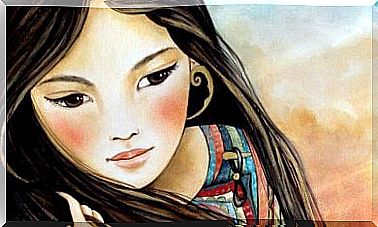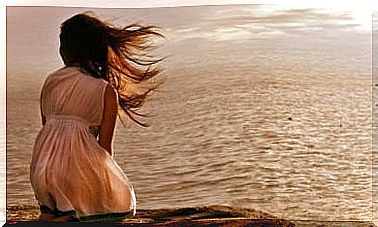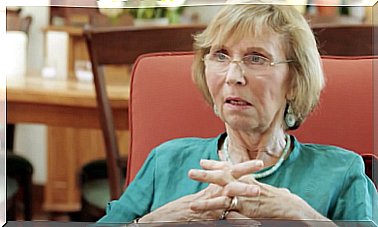Søren Kierkegaard: Biography Of The Father Of Existentialism
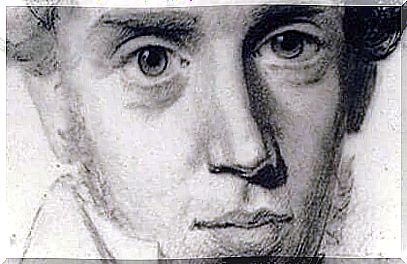
It is said that Søren Kierkegaard loved Regina Olsen until the day he died. His purpose in life, however, was to devote both body and soul to the study of philosophy and the Christian faith. This Danish theologian and philosopher had to live with the pain of not being able to be with his beloved. But thanks to this, he was able to build his remarkable legacy.
Kierkegaard’s work is mainly based on faith. According to him, one can only attain salvation and balance through faith. This perspective was a reaction to Hehel’s idealism. In fact, what defined this Danish philosopher was his critique of the religious institutions that, according to him, were hypocrites.
The dualism that shaped his entire life is quite evident in his books Fear and Trembling , Philosophical Crumbs and The Seducer’s Diary . Love, suffering and impossible passion, against the need to devote oneself to theology, characterized the hard road that one of the most interesting people in philosophy had to travel.
The Danish Church believed that there was a rational god who rewarded good deeds, but Kierkegaard’s god did not care about devotion, but about fear. His philosophy laid the foundation for 20th century existentialism. He defined human subjectivity and also inspired other great thinkers such as Jean-Paul Sartre, Friedrich Nietzsche and Albert Camus.
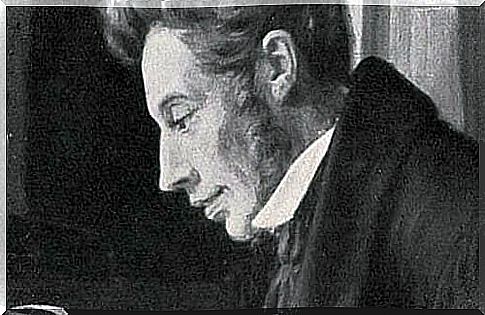
Biography of Søren Kierkegaard
Søren Kierkegaard was born in Copenhagen in 1813 to a well-to-do family. His father’s name was Michael Pedersen Kierkegaard, a very religious cotton merchant with a conservative disposition. His mother’s name was Anne Sorensdatter Lund Kierkegaard, a young servant whom his father had made pregnant. This made him feel like a product of a sinful act.
The young Søren studied theology at the University of Copenhagen. We should mention, however, that he was primarily interested in philosophy and literature.
During his youth, he met 15-year-old Regine Olsen, whom he became engaged to after completing his studies. However, his father made Søren promise that he would become a pastor and that he would dedicate his life to God and to study. This promise was what made his love life end. He broke off his engagement to Regine and then moved to Berlin.
The following ten years became the most productive years of his life.
Love, guilt and suffering
In 1843 he published six of his works. One of them was Fear and Trembling , in which he described in detail a subject he would continue to talk about in his other works: his love for Regine. In this work, he explores his feelings of guilt, his pain and his devotion to religion. That same year, he returned to Copenhagen and found out that Regine had just married Frederik Shlegel. His hopes for a marriage had collapsed.
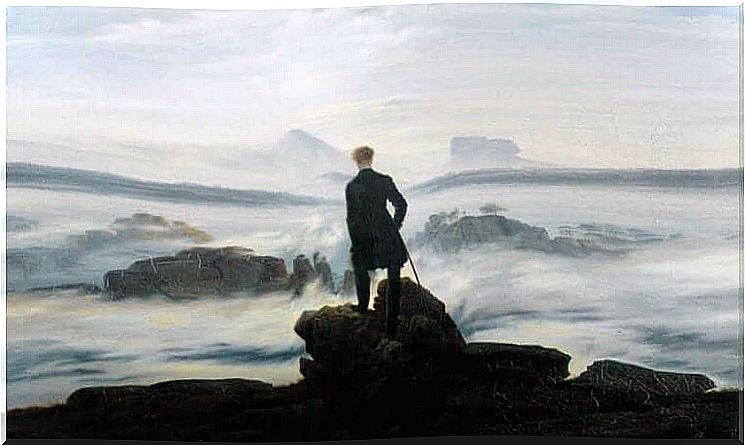
His most famous works Philosophical Crumbs , The Concept of Anxiety and Stages on the Path of Life talk about the thoughts and realities that a person experiences when he is met by adversity.
Søren Kierkegaard and his brother Peter slowly became the only survivors in a family full of tragedies. Their father always reminded them that they had a curse on them, that the shadow of sin always hung over them, and that they would die young. However, that prophecy came true: Kierkegaard died at the age of 42.
The cause of death was never determined. He suffered from various forms of health problems. However, that did not stop him from leaving his exceptional literary and philosophical legacy. Another interesting detail about his last days shows us how deep he felt for Regine, because he included her in his will.
Søren Kierkegaard and his legacy
William James liked to quote Søren Kierkegaard: “Life can only be understood backwards; but it must be lived in the future. ” He was the Danish philosopher and theologian of subjectivity.
He taught the world that living means knowing how to make the right decision. With every decision we make, we shape our existence to be able to define who we are and what we leave behind. Kierkegaard also worked hard to make people understand the importance of fear and suffering. All of this is a part of life and the only way to alleviate the pain is through faith.

Pseudonyms and existentialism
Søren Kierkegaard performed most of his work under various pseudonyms such as Victor Eremita, Johannes de Silentio, Anti-Climacus, Hilarius Bokbindare and Vililus Haufniensis. He used these pseudonyms with a very concrete goal: to represent different forms of thinking.
He called this strategy “indirect communication”. Using pseudonyms, he was able to explore other perspectives. At the same time, one of Kierkegaard’s aims was to teach a way of life, so he established three spheres of existence:
- First and foremost, we have the aesthetic sphere, a way of life based on pleasure, hedonism and nihilism.
- The ethical sphere is where the individual can take responsibility for his or her soul. In that sphere, one should be able to distinguish between good and evil and act accordingly.
- The religious sphere was the highest in Kierkegaard’s hierarchy. In it, people form a personal relationship with God to achieve lofty goals.
The philosopher of anxiety and irony
Figures such as Albert Camus defined Søren Kierkegaard as the philosopher of irony. Kierkegaard defended the faith above all else, but he always criticized the Danish Church. Even when he rejected the love of his life, he never stopped loving her and was an inspiration to much of his work.
He was always empathetic with the need to cultivate a religious nature, but he himself was trapped in an aesthetic-ethical sphere.
Another aspect that defined his thoughts was the concept that would later inspire the works of other great writers such as Kafka, Unamuno or the philosopher Ludwig Wittgenstein. We talk about anxiety, the feeling that never goes away. The reason for this is that it helps us become more aware that there are more options in life, that we can take a big step forward or take a step back to find other solutions. There is always an alternative to suffering, but suffering itself helps us grow.




